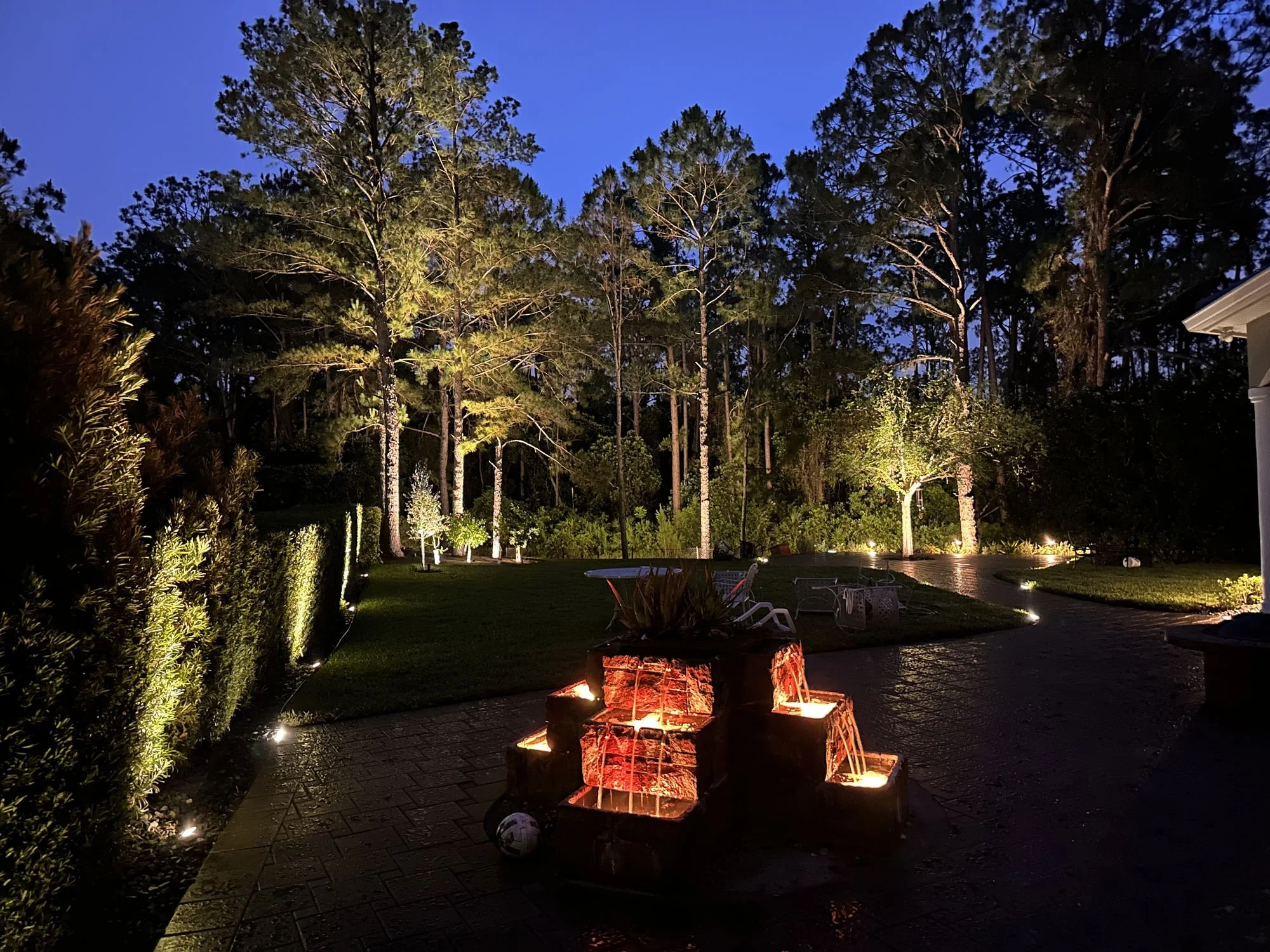What Is Voltage Drop in Landscape Lighting — And Why It Matters
What Is Voltage Drop?
Voltage drop happens when electricity travels through a long wire and loses strength along the way. In a low-voltage (12V) landscape lighting system, even small losses can make a big difference in performance.
The farther electricity has to travel — and the more fixtures it powers — the more resistance builds up in the wire. That resistance reduces the voltage each fixture receives at the end of the run. The result?
Dim or uneven lighting
Flickering fixtures
Overworked transformers
Shortened fixture lifespan
Client frustration
Why It Happens (And How to Prevent It)
Voltage drop is a basic electrical reality — but many installers don’t design around it. That’s where systems fail. If you put too many lights on a single run or use the wrong wire gauge, voltage will plummet by the time it reaches the last fixture.
Causes of Voltage Drop
Too many fixtures on a single run
Long wire lengths without compensation
Incorrect wire gauge (too thin for the load)
No voltage tap adjustment on the transformer
Cheap connections that introduce resistance
Poor system planning — or no planning at all
What It Looks Like in the Real World
Most voltage drop issues aren’t noticed right away. The lights might “work,” but clients eventually call back because:
The lights in the front yard are bright, but the ones on the far side are faint
Some fixtures flicker at night or randomly fail
Lights get dimmer over time as wire resistance adds up
The transformer runs hot or gets overloaded
We’ve replaced many systems across Central Florida that were installed by other companies who simply didn’t do the math
How We Prevent It at Ecotek
At Ecotek, we calculate voltage drop for every job. We factor in:
Wire gauge
Fixture load (VA)
Distance to last fixture
Multi-tap transformer selection
Layout efficiency (hub, T, daisy chain, etc.)
Target voltage delivery (usually 10.8–11.5V at the end of the line)
We also use larger transformers, multi-tap outputs, and proper VA budgeting to ensure every fixture gets what it needs — from the first to the last.
Learn About Our Lighting Packages
Contact Us with Questions
Signs Your System Has Voltage Drop Issues
Fixtures farthest from the transformer are noticeably dimmer
You’ve already replaced bulbs or fixtures, but the issue persists
Transformer feels hot or trips
Light quality is inconsistent (color temp shifts, pulsing, etc.)
The system looked fine at install, but degraded quickly
Why Voltage Drop Affects Fixture Lifespan
Running LED fixtures below their intended voltage weakens performance and can actually shorten their lifespan. The LEDs run hotter, color shifts occur, and integrated drivers may fail prematurely.
It’s not just about light quality — it’s about protecting your investment.
A Quality Lighting System Starts with the Right Design
Voltage drop isn’t just technical trivia — it’s the difference between a system that works for 10 years and one that fails in 6 months.
We install low-voltage systems across Central Florida with proper voltage balancing, transformer sizing, and system layout — built for brightness, reliability, and long-term ROI.
Learn About Us
Learn about our Maintenance Program
Want a System That’s Built to Perform?
Most companies overlook voltage drop. We engineer around it. Let’s build a system that lights every corner of your property — evenly, cleanly, and without compromise.

